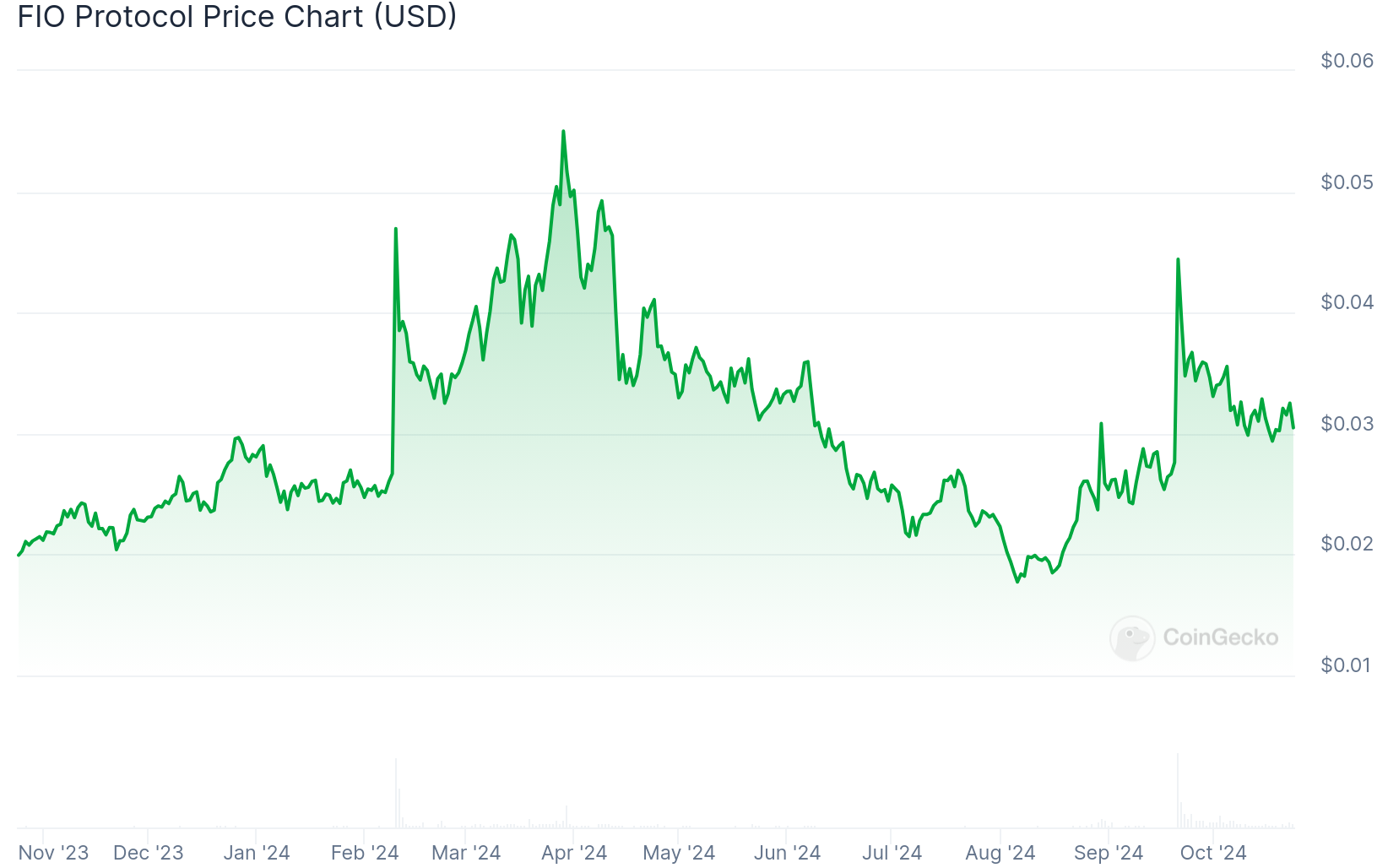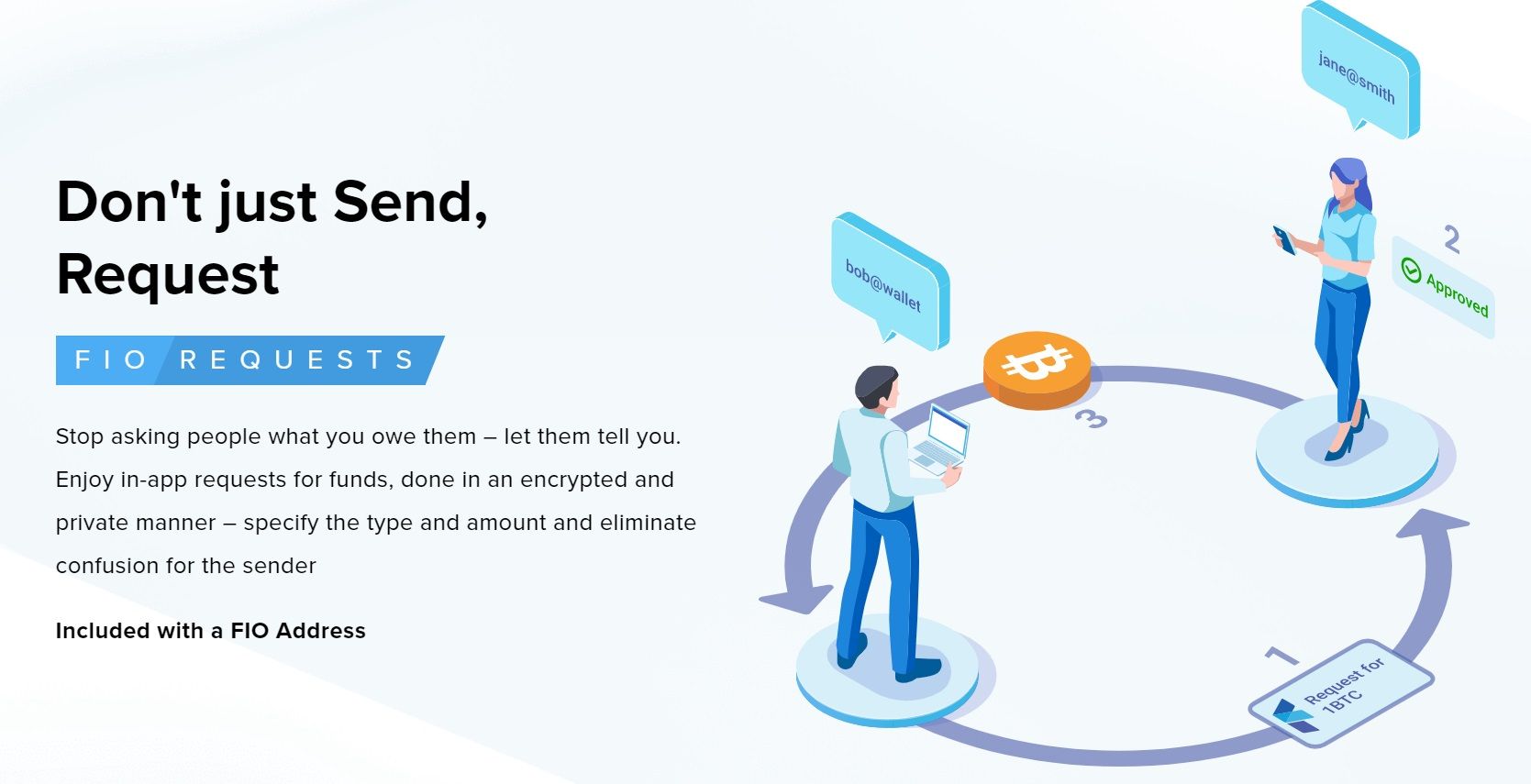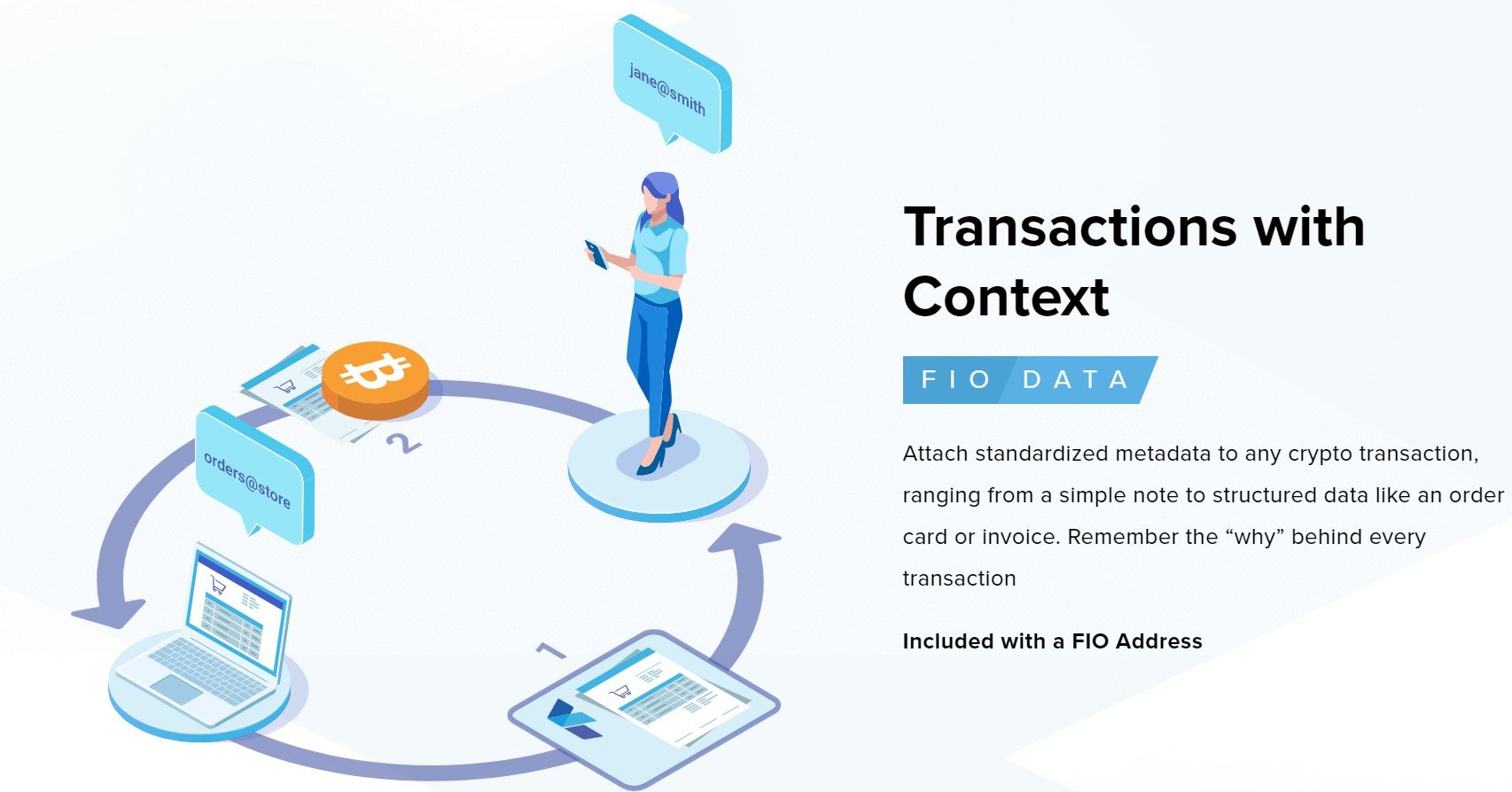The FIO Protocol looks to solve usability issues with blockchain transactions. But how does the FIO Protocol work, and what is the role of the FIO Protocol token (FIO)? Continue reading to discover everything you need to know in 2025.
KEY TAKEAWAYS
► The FIO Protocol improves blockchain usability through features like human-readable wallet names, payment requests, and data transfer.
► FIO operates on a delegated proof-of-stake (DPoS) mechanism, which allows token holders to vote for block producers and receive rewards.
► The FIO token is central to the protocol, used for fees, governance, and registering FIO addresses, with a capped supply of 1 billion FIO.
► FIO’s potential as an investment relies on the continued adoption of its features, but like all cryptocurrencies, it remains a volatile asset.
What is FIO?
FIO is an open-source project launched by a community of over 20 blockchain developers on Apr. 2, 2020. The FIO Protocol project started 1.5 years earlier. FIO stands for the Foundation for Interwallet Operability. It is a nonprofit entity guided by the industry on its mission to adapt and improve the FIO Protocol.
The FIO blockchain enables safe and easy transactions for the entire blockchain ecosystem. Its objective is to become a usability layer for blockchains to connect payment processors, exchanges, wallets, and any other application that processes digital assets.
There are three key features of the FIO Protocol:
- Wallet names: The Protocol offers easily readable blockchain wallet names that replace the long string of characters. This feature is also known as a FIO address.
- Request payment: The option to also request a blockchain payment, not just to receive a payment.
- Transfer data: The ability to attach data to a transaction, such as an invoice or note, alongside the crypto transaction.
The FIO Protocol also supports the integration of blockchain wallet apps and crypto exchanges. Many have already integrated the service, including the Edge and Trustee Wallets, as well as the WhiteBIT and Changelly exchanges. Most cryptocurrency exchanges, such as Binance, listed the FIO token for trading. You can find the entire FIO ecosystem here.
The project’s ultimate goal is to offer a superior user experience when interacting with the blockchain ecosystem by reducing risky operations such as sending funds to the wrong blockchain address.
The FIO community benefits
- Decentralized blockchain: The FIO Chain is a public blockchain that doesn’t require a centralized third party to operate it.
- Easy to interact with and convenient UI: Crypto owners can receive funds using intelligible blockchain addresses such as “jim@trustwallet.”
- Privacy: All sensitive information is encrypted on the blockchain.
- Secure: All FIO Chain transactions need an FIO private key, which is known only by the user.
- Inter-operability: The FIO Protocol can function with any blockchain and crypto after wallet integration.
- Retail and eCommerce ready: The FIO Protocol offers the request for payment and private metadata features.
How does the FIO Protocol work?
The FIO Protocol achieves network consensus through the delegated proof-of-stake (DPoS) mechanism.
Users who hold FIO tokens can vote to choose their block producers (BPs), and anyone can register as a candidate to become a BP. Voting for BP happens after every epoch (every 126 blocks), with a total of 42 BP selected (21 BPs active and 21 on standby).
The 21 active block producers receive rewards of 40% of the fees for each block they help verify transactions for, which they split equally among them. The protocol distributes the remainder to all 42 BPs according to the number of votes they’ve received.
FIO produces blocks every 0.5 seconds. The active BPs produce six blocks each during an epoch. A BP can modify smart contracts and system settings when it achieves a majority of at least 15 BPs.
FIO Chain interactions can be tagged with an additional TPID (Technology Provider ID), which is a type of FIO Address. When this happens, that TPID address receives a part of the transaction fees. This feature boosts FIO Protocol adoption in the blockchain ecosystem.
What is FIO Protocol (FIO) token?

The FIO Protocol (FIO) token is necessary to utilize the FIO Protocol and pay the FIO blockchain fees. Its native token, the FIO crypto, acts as the economic driver of the blockchain.
Sponsored SponsoredThe FIO chain is the Foundation on which the Interwallet Operability (FIO) Protocol runs. You can indirectly obtain the FIO token, as one feature of the FIO chain is the acceptance of indirect payments. It accepts intermediary crypto, i.e., more popular cryptocurrencies, as payment for fees.
FIO Protocol use cases and applications
The FIO Protocol strives to become a better alternative to sending and receiving crypto. You can use the FIO token for on-chain governance, transactions, and gas fees.
The community that created the protocol describes it as being similar to the internet protocol we all use on a daily basis: “FIO is to crypto, what HTTP is to the internet.”
FIO Addresses

The blockchain address is like a bank account for digital assets. Without a blockchain address, one cannot send or receive cryptocurrency, tokens, or other assets. The issue with blockchain addresses is that they aren’t easy to memorize and often look intimidating to new users.
One downfall of blockchain addresses is using the wrong address to send funds, resulting in a loss. Sending crypto to the wrong blockchain address, such as sending ETH from Arbitrum to an Optimism address, will result in lost funds, as blockchain transactions are irreversible.
However, the FIO community invented a utility layer focused on crypto endpoints, such as wallets and crypto exchanges. This eliminates the risk of human error when sending funds. FIO Addresses are an identifier for blockchain public addresses.
It’s easy to register for a handle such as “john@ethereum” (this is only an example of a user name and a network), and it automatically works with any token or coin.
Users can register an FIO Address on an FIO-enabled wallet or an exchange. The Foundation for Interwallet Operability is pre-paying FIO Addresses for new users to let them use the FIO Protocol for free for their first year, but this is a limited offer. All interactions with the FIO Protocol are controlled by FIO private keys.
FIO Addresses have a yearly fee, with a limit of 100 free transactions. You can pay the yearly fee with the FIO Protocol (FIO) token. After exceeding the free transactions’ quota, the user has two choices. They can either renew the yearly subscription with another FIO Protocol token payment or pay an individual fee for every subsequent transaction.
A FIO Address will be disabled if the renewal fee is not paid by its expiration date. After 90 days, any user can re-register that FIO address.
SponsoredFIO Requests

Traditionally, blockchain technology only allows users to send funds. However, the FIO Protocol has a built-in function that allows users to create encrypted in-app funds requests, in which the type and amount of crypto could be specified.
This functionality eliminates friction between blockchain users and allows a payee to initiate a transaction using a FIO Address. All sensitive metadata is stored on-chain and is encrypted using the Diffie-Hellman key exchange.
The wallet communicates with the FIO Chain and decrypts the request inside the payer’s wallet if a relevant FIO request exists. The payer has the option to approve or reject requests.
FIO Data

FIO Data makes it easier for users to remember the details of each transaction. This feature allows users to attach metadata to a crypto transaction, such as an invoice or a simple note.
The FIO Data feature can become a useful component for eCommerce blockchain transactions. It allows the on-chain storage of invoices, contact information, and dates for future reference. FIO Data can also include metadata such as transaction IDs, off-chain hash data, or refund addresses.
FIO roadmap and development history
The FIO Protocol project started in Q4 of 2018 during the launch of the Foundation for Interwallet Operability. By the end of 2019, the FIO Addresses launched on pre-sale alongside the launch of the FIO Chain testnet.
By Q1 of 2020, the FIO Protocol had released the core functionalities. The token burn functionality was also completed in 2020. In 2021, it released the contract code updates for FIO Improvement Proposals (FIPs), as well as the ability to transfer FIO Addresses to a new owner.
The entire list of completed, in progress, and future FIPs and other developments can be found on the FIO Community Roadmap page. All updates are announced on the official FIO Protocol blog. The community is very active on Twitter, Telegram, and Discord.
Sponsored SponsoredFIO Domain and FIO Addresses are non-fungible tokens (NFTs) and can be traded.
FIO tokenomics

The FIO token has a maximum supply of 1 billion units (of which 38,506,000 are permanently locked). Each FIO Token is divisible into 1 billion smaller units of FIO (SUF). There will be no inflation beyond the maximum supply. The FIO token distribution is as follows:
| Share | FIO Token % of the total token supply |
| Equity Investors | 16.42% |
| Private Sale 1 | 0.04% |
| Private Sale 2 | 0.04% |
| Private Sale 3 | 1.33% |
| Team | 17.53% |
| Advisors | 1.05% |
| Foundation | 22.01% |
| Foundation Service Provider | 0.32% |
| Future Token Sales Reserve | 3.59% |
| Bounties | 12.50% |
| Integration Incentives | 11.39% |
| FIO Address Giveaway | 12.50% |
| Block Producer Incentives | 1.00% |
| Airdrop | 0.28% |
The FIO Protocol had three rounds of funding, which raised a total of $6.27 million from equity and private token sales.
FIO Protocol price and price predictions
The token’s price is dictated by the ecosystem that adopted the utility of FIO Protocol. The all-time high for FIO Protocol was $0.560433 on April 6, 2021. Demand for the FIO Protocol token could rise because:
- Users need the FIO Token to register FIO Addresses and Domains and for transaction fees.
- Users want to contribute to the development of the FIO Protocol. The FIO crypto is needed for voting for Block Producers (BPs).
- Rewards will be granted from wallets and exchanges for holding the FIO Token.
- Future FIO Protocol developments will have new utility fees.
For a more in depth analysis of the FIO Protocol’s price potential, checkout BeInCrypto’s price prediction.
Is FIO Protocol a good investment?
As with any crypto investment analysis, it is difficult to make a 100% accurate prediction. The FIO Chain has a transparent and easy-to-understand mechanism and real utility in the crypto space.
The network also encourages and incentivizes crypto enthusiasts to participate in further developing the protocol. As always, we encourage you to do your own research to observe the most recent announcements and actions before investing in any crypto and blockchain project.
Disclaimer: This article is for informational purposes only and should not be considered financial advice. Crypto is a highly volatile asset and you may lose money.

